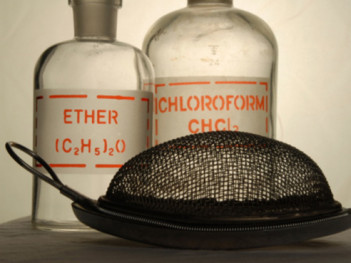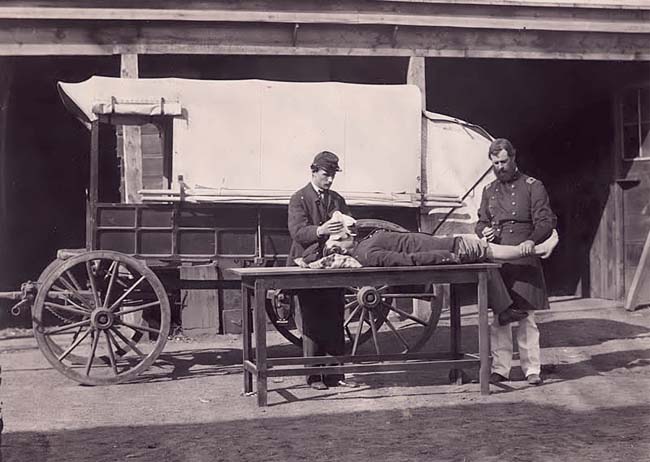Although the development of anesthesia took place in the 1840’s, surgery was still not regularly performed due to fear of infection and other complications. That was until the Civil War started in 1861, which caused the number of necessary operations to drastically increase. According to an article in the newsletter of the American Society of Anesthesiologists by Maurice S. Albin, M.D., “The sheer magnitude of battlefield injuries during the conflict played a major role in establishing the regular use of anesthesia.” The need for surgery was greater than ever before, which gave physicians no choice but to use anesthesia to operate.
Methods Prior to Anesthesia
Prior to the the war, patients may have been given something to bite on, alcohol, opioid drugs, or put in physical restraints to keep them under control during surgery. According to Albin, “It was thought to be unmanly for a male to undergo surgery with an anesthetic, which was usually reserved for women and children. There was even a belief that the use of ‘cold steel’ had a beneficial effect, and it would not cause the depression thought to occur with the use of anesthesia.”
“Real Men” Don’t Need Anesthesia
The idea of anesthesia being “unmanly”, quickly shifted as the war progressed and the number of injuries rapidly increased. It became a necessity in battlefield hospitals, and is believed that there were around 120,000 uses of anesthetic agents by surgeons on both sides during the battle.
Anesthesia on the Fly
At the time of the Civil War, many surgeons and physicians had little no experience with using an anesthetic during operations. They were forced to rely on manuals which gave them instructions on how to properly use anesthetics such as ether and chloroform. Although many doctors lacked experience with these agents, mortality rates associated with the use of an anesthetic were surprisingly low.
Albin stated, “After the termination of this horrendous conflict, these doctors would return to their practices, hospitals and medical schools, all the richer for being exposed to this unique American contribution to the life-easing quality of mercy — the discovery of anesthesia.” Physicians benefited from learning firsthand the techniques and uses of anesthetics, and many lives of wounded soldiers were saved as a result.
Today, millions of people undergo anesthesia each year in the United States alone, and it has become extremely common. Although anesthesia has developed and changed over the years, its regular use was established during the time of the Civil War.


